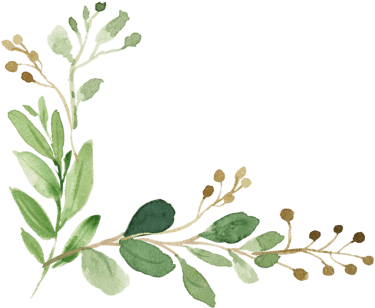If you’re feeling anything like me, you feel inspired by spring! Every spring, I find myself a bit giddy. I can’t easily explain it, but my heart smiles, and I am so full of joy every year around the same time. As the days get longer in early March, meaning more sunlight, and the temperatures steadily start to climb, and I can’t help but get excited about all the possibilities spring will bring.
Emerging from the winter with renewed energy and a new attitude, we welcome the fresh air, warm sunshine, and the promise of a brand-new start. We strip away the layers of clothing we’ve wrapped ourselves in for the past several months. We begin craving opportunities to get outside into nature, to reconnect with friends, and plan spring and summer vacations. We even find ourselves taking on new and creative projects. There’s just so much possibility, and it feels like the sky’s the limit.
But for some of us, this feeling is short-lived. The spring and summer months bring so much hope and possibility, but as the days begin to get shorter, we find ourselves experiencing unexplained feelings of fatigue, sadness, difficulty concentrating, and a disruption in our sleep schedule. But when springtime re-emerges, everything is sunny, and we’re full of life again. It’s like we’re on a hamster wheel that we never asked to be on and can’t seem to get off.
This dip in energy and mood, especially during the winter months, is commonly known as the winter blues and is quite normal, affecting about 10 million people yearly. However, when sadness becomes more than just sadness and starts interfering with your ability to function daily, it could be something more serious. Along with the common symptoms of winter blues, Seasonal Affective Disorder which is a Major Depressive Disorder with Seasonal Pattern is marked by irritability and feelings of hopelessness and despair. Those who suffer from SAD tend to be withdrawn/isolate themselves, have very low energy levels, oversleep, and have poor eating habits, often resulting in weight gain. A key feature of Seasonal Affective Disorder, or SAD, is that it follows a general pattern in most people it affects. It typically appears each year during the fall and usually goes away during the spring and summer months, which explains the hamster wheel. SAD has been linked to a disruption in the body’s internal clock or circadian rhythm. The reduced sunlight during the cooler months reduces the serotonin levels in the body, which can trigger depression and the rise in melatonin levels, impacts mood and sleep patterns. As of date, there is no known way to prevent Seasonal Affective Disorder, but there are ways to manage the symptoms to prevent them from worsening over time.
Let’s consider how you can make the most of the cooler seasons and maintain your spiritual, mental, emotional, and physical balance.
One key thing to remember is that while you may not be able to change the weather or make the days longer during the winter, you can control how you respond to the change in the elements by practicing good self-care to help you feel better. Some things I have found to combat the winter blues are simple and begin during spring and summer months. They take a bit of conscious intention and planning, but if done, help you transition into winter a bit more gently.
Let in the air and light
All year round, get as much sunlight as you possibly can. Get out and enjoy the sun. Fill your home with light. Open your window blinds daily to let the sunshine in. Bask in the sun’s warmness; if it’s not too hot or cold outside, open your windows and let some fresh air in. Springtime has some of the best fragrances; take them all in (that is if your allergies don’t kick in). When there is less sunlight in the fall and winter, consider using a light box, aka a happy lamp at least a few minutes daily. It will make all the difference in the world. But you must get in your vitamin D! Low vitamin D levels have been associated with depression.
Move your body
Exercise daily/almost daily. When at all possible, get outside for brisk walks in the sun. Not only are you getting exercise, but again you’re also soaking up all that vitamin D. If the weather doesn’t permit, try walking on a treadmill indoors, or something else to get your heart rate up. You can also include yoga and pilates to build strength and flexibility while lifting your mood.
Stay Grounded and in the Now
Take up a mindfulness meditation practice. This form of meditation helps us to become present with what is. Isolation is a sure way to get trapped in thoughts of the past and the future. Commit to taking the time daily to be still in the moment without judgment or allowing distractions or thoughts to creep in and steal your joy.
Allow your senses to take over and take in all the beauty and life around you. Embrace the moment. In that moment, there is no past, no future, just the moment. Be in the moment.
Eat Mood-Boosting Foods
Cook hardy, grounding, feel-good meals when you can. Be sure to include foods high in vitamin D, such as fatty fish like salmon and tuna, along with vitamin D-fortified foods like milk, orange juice, breakfast cereal, yogurt, and other food sources such as fermented foods (kimchi, kefir, kombucha, and sauerkraut), bananas, oats, and berries can help balance mood. In the cooler months, make extra to freeze for days you won’t feel like cooking.
Stay Connected
Seasonal Affective Disorder/SAD can cause us to isolate ourselves, feeling too low to interact with others. It is crucial to stay connected during these low times. Maintain your connections to family and friends all year long. This can be in person by phone or by video chat. The key is to stay connected. If you start to feel yourself disconnecting, pick up the phone and re-establish a connection with someone you trust and who makes you feel safe. Make a habit of planning activities throughout the year with loved ones so you always have something to look forward to. Plan early and stick to those plans.
Stay prepared
Now that you know that SAD is inevitable and is bound to rear its ugly head as soon as the cooler months approach, you can get ahead of the game by brainstorming early. Before the first autumn leave falls, take out a pen and paper, write down all the little and big things that bring you joy, peace, and happiness. Note which ones you can realistically do now and weave each into your day-to-day, week-to-week life as the season progresses. Share your brainstormed ideas with your loved ones, and inspire them to make their own lists.
You are not alone
Remember, you are not alone in this, and it is okay to ask for help. While in most cases, only seasonal (which is still roughly six months of suffering), the winter blues and SAD can take a toll on your physical and mental health. If you feel that your efforts and lifestyle modifications are not providing the relief you need, consider seeking professional help for other alternatives.
It’s helpful to begin practicing good self-care before symptoms typically start and continue treatment beyond when symptoms generally fade away. With a conscious intention, you can minimize the effects of the winter blues when they strike with more grace. Remember, life is too short not to enjoy it, regardless of the season.






0 Comments